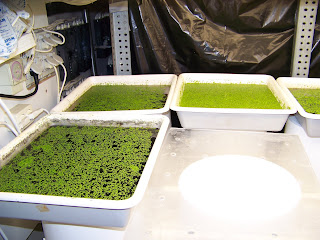









Author: Wendy Mussoline
I entered the courtroom a bit late because I still don't know north from south yet I continually challenge myself to travel by train and then 6 miles by bike to an unknown destination...with a poor map...so I've just arrived in Wageningen and standing in front of the train station staring at the city map...I clearly know that I have to travel 6 miles SOUTH to my destination...its around 10AM, but the Holland sun just is not really at the 10AM position that I'm used to in Florida...so I ask a couple standing near the map "Which way is south?" They do not know either and they point me in the opposite direction...I am just mounting my bike, when a local townsperson asks where I'm going..I say to the univerity in Wageningen and he turns me back around and sets me on the right course...it is true...I am directionally challenged but I am determined to perservere through the handicap!
So I attended a trial...well, it was actually a doctoral defense, but it appeared as though it was a trial to me...the defendent was standing center stage with two "wing-men" on his sides (all dressed in tuxedos)...the opponents consisted of a panel of four robed professors on the left that were firing questions left and right...the promoters were quiet in their robes on the right. After exactly an hour, a lady came in with some type of fancy staff (i'm sure it has a name), rang the bell and declared the session was finished...the professors left and then returned in 15 minutes to give the verdict...and the verdict was the Raoul received his doctorate degree from Wageningen University through his research on methane oxidation and sulfate reducing bacteria within an anaerobic reactor that he ran for literally 900 and some odd days. The topic was also very interesting, but the dramatic presentation was even more impressive.
So since I was already in the far Eastern part of Holland, I rode by bike about 20 miles along the Lower Rhine River and into parts of the Utrecht National Forest to arrive at my weekend destination. I visited a Christian ministry house in Eck en Wiel (L'Abri) for the weekend and met about 30 people from US, Holland, South Africa, South Korea, etc. The house is in a rural farm area and students from all over come to visit for a weekend or some come for a "term" which is three months. The goal is to study the Scriptures in the context of a Christian community and participate in the daily chores such as preparing meals, picking berries, painting the house, patching the roof, planting the garden, etc. It was a unique experience that I thoroughly enjoyed.
This geographical area of Holland known as the Betuwe area is famous for their fruit production. The primary orchards in the area consist of cherry, plum, apple and pears. The famous jam factory "De Betuwe" was a draw until they moved production to Breda in 1992. However, I still found plenty of stands selling fresh homemade jam so I was sure to pick up a few jars...and of course, more cherries for the train ride home!












































